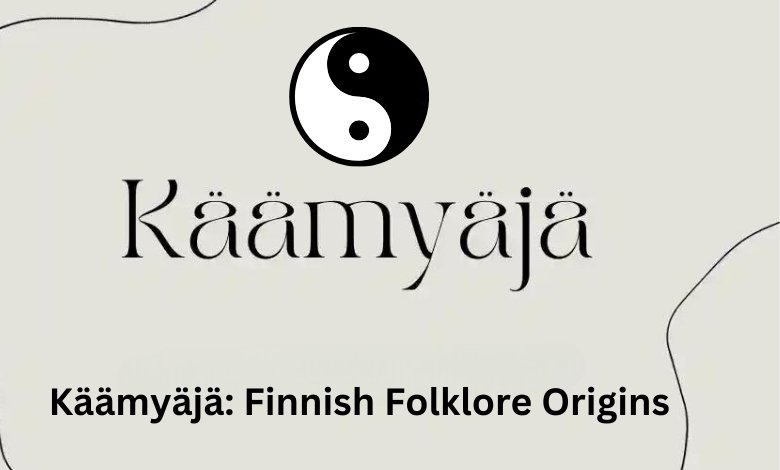
käämyäjä: Finnish Folklore Origins
käämyäjä A fascinating Finnish cultural concept rooted in folklore, sparking curiosity about its meaning and significance. Step into the enchanting world of Finnish folklore, where ancient traditions and mystical tales come alive.
In this captivating journey, we delve into the depths of a unique aspect of Finnish mythology known as käämyäjä. Brace yourself for a mesmerising exploration as we unravel the origins, beliefs, and significance behind this intriguing phenomenon. From its historical roots to its modern interpretations, käämyäjä has woven itself into the cultural fabric of Finland like an ethereal thread.
So grab your imagination and let’s embark on this magical voyage together.
What is käämyäjä?
käämyäjä is a fascinating concept rooted in Finnish folklore that holds deep significance in the culture and traditions of Finland. But what exactly is käämyäjä? Let’s delve into this intriguing phenomenon.
käämyäjä can be described as a mystical force or energy that surrounds and permeates everything in the natural world. It is believed to have its origins in ancient shamanic practices and represents the interconnectedness between humans, nature, and spirits.
In Finnish mythology, käämyäjä is seen as a guiding force that influences various aspects of life – from birth to death, from agriculture to hunting. It embodies the belief that all living beings are part of a greater whole, with each individual playing their unique role.
This spiritual connection with käämyäjä has shaped traditional beliefs and practices among Finns for generations. Many rituals are performed to honor this powerful force, such as offering prayers and sacrifices to appease the spirits associated with it.
In modern times, though less prominent than before, käämyäjä continues to hold cultural significance for many Finns. It serves as a reminder of their ancestral roots and helps them maintain harmony with nature in an increasingly urbanised world.
The tales surrounding käämyäjä are richly woven into Finnish folklore. These stories often depict encounters between humans and supernatural beings like forest spirits or mythical creatures who possess knowledge about harnessing the power of käämyäjä.
The History and Origins of käämyäjä
käämyäjä, a fascinating aspect of Finnish folklore, holds deep historical and cultural significance. Its origins can be traced back to ancient times when the Finnish people lived in close connection with nature. The word “käämyäjä” itself is believed to come from the combination of two Finnish words: “kaamio,” meaning shadow or reflection, and “ya,” which refers to an otherworldly realm.
The history of käämyäjä dates back centuries, intertwining with the traditions and beliefs carried by generations. In traditional Finnish culture, it was believed that every individual had their own personal käämyäjä – a spiritual guardian who accompanied them throughout life. These guardians were thought to have various forms, ranging from animals like wolves or bears to ethereal beings resembling light or mist.
The purpose of käämyäjä was multifaceted; they were seen as protectors against evil spirits and misfortune while also guiding individuals towards their destined paths. It was customary for Finns to seek guidance from their käämyäjäs through rituals such as meditation or visiting sacred locations in nature.
Over time, Finland underwent societal changes and modernization that affected the perception of käämyäjäs. However, this mystical concept still holds immense importance within contemporary Finnish society. Many people continue to embrace their ancestral beliefs by incorporating elements of käämyäjä into everyday life.
Traditional Beliefs and Practices Surrounding käämyäjä
käämyäjä, deeply rooted in Finnish folklore, is not just a mere concept or myth. It holds great significance and is believed to have a profound influence on the lives of individuals. The traditional beliefs and practices surrounding käämyäjä are fascinating, reflecting the spiritual connection between humans and nature.
In Finnish culture, it is widely believed that each person has their own unique käämyäjä spirit. This spirit guides them through life, offering protection, wisdom, and luck. Many people perform rituals to connect with their käämyäjä spirit. These rituals often involve communing with nature – walking in the woods or sitting by a tranquil lake – allowing oneself to be immersed in its beauty.
Another common belief is that offerings can appease the spirits associated with käämyäjä. For example, placing food or flowers at specific locations known for being inhabited by these spirits is thought to bring blessings upon one’s life.
The practice of divination also plays a significant role in understanding one’s connection with their käämyäjä spirit. Diviners use various methods such as tarot cards or runes to gain insight into an individual’s path and purpose guided by their personal.
The Role of käämyäjä in Finnish Culture and Society
käämyäjä, with its rich history and folklore, holds a significant role in Finnish culture and society. It is not just a mere superstition or old wives’ tale but rather an integral part of the daily lives of many Finns.
In Finnish culture, käämyäjä is believed to be a mystical force that governs one’s luck and fate. It is thought to influence various aspects of life, such as relationships, health, career success, and even the weather. This belief has led to the development of numerous rituals aimed at appeasing or harnessing the power.
For instance, some Finns practice “syöminen onnea tuovaksi” or eating for good luck. They believe that certain foods possess special properties that can attract positive energies from käämyäjä. Similarly, others engage in “pakkasennuste,” where they try to predict the weather based on signs observed in nature.
Furthermore, Plays a crucial role during festive occasions like weddings and birthdays. During these events, traditional customs are followed to ensure blessings from this mystical force. For example, it is customary for newlyweds to carry bread over their heads while entering their new home as a way to invite good fortune into their lives.
Modern Adaptations and Interpretations of käämyäjä
In recent years, there has been a resurgence of interest in Finnish folklore and mythology, including the ancient tradition of käämyäjä. While this folklore may have originated centuries ago, it continues to inspire artists, writers, and filmmakers today.
One modern adaptation of käämyäjä can be seen in contemporary art. Many artists draw inspiration from the rich symbolism and mythical creatures associated with this folklore. Paintings depicting mystical forests filled with ethereal beings or sculptures representing legendary creatures like the Haltija are just some examples of how artists reinterpret these ancient stories.
Another way that käämyäjä has found its place in modern society is through literature. Finnish authors often incorporate elements of folklore into their novels and short stories, allowing readers to immerse themselves in magical worlds where spirits roam freely. These literary works not only entertain but also educate readers about the importance of preserving cultural heritage.
Additionally, filmmakers have taken an interest in adapting käämyäjä for the screen. Through visually stunning movies or captivating documentaries, they bring these mythical tales to life for audiences around the world. By combining ancient storytelling techniques with modern cinematography, directors create a bridge between past and present.
Folktales and Legends Associated with käämyäjä
Folktales and legends have always held a special place in Finnish culture, and käämyäjä is no exception. These stories are woven with magic, mystery, and the timeless wisdom of generations past. From enchanted forests to mythical creatures, these tales transport us into a world where anything is possible.
One popular legend tells the story of a young girl who ventured deep into the heart of the forest in search of her lost brother. As she wandered through towering trees and moss-covered rocks, she encountered ethereal beings known as “the spirits of käämyäjä.” These mystical creatures offered guidance and protection on her journey.
Another captivating folktale revolves around a mischievous gnome named Pekka. Legend has it that Pekka would play pranks on unsuspecting villagers but would also lend a helping hand when needed. He was said to possess incredible strength and could move objects with just his thoughts.
Conclusion
käämyäjä, with its rich history and folklore origins, holds a special place in Finnish culture and society. This ancient practice has been passed down through generations, preserving traditional beliefs and customs that are still celebrated today.
The origins of can be traced back to the early days of Finnish civilization, where it was believed to bring good luck, protection from evil spirits, and prosperity. The rituals associated were deeply ingrained in the daily lives of the Finnish people.
Throughout the centuries, käämyäjä has evolved and adapted to modern times while still maintaining its essence. It is now embraced as not only a cultural tradition but also as a symbol of national identity for Finland.







